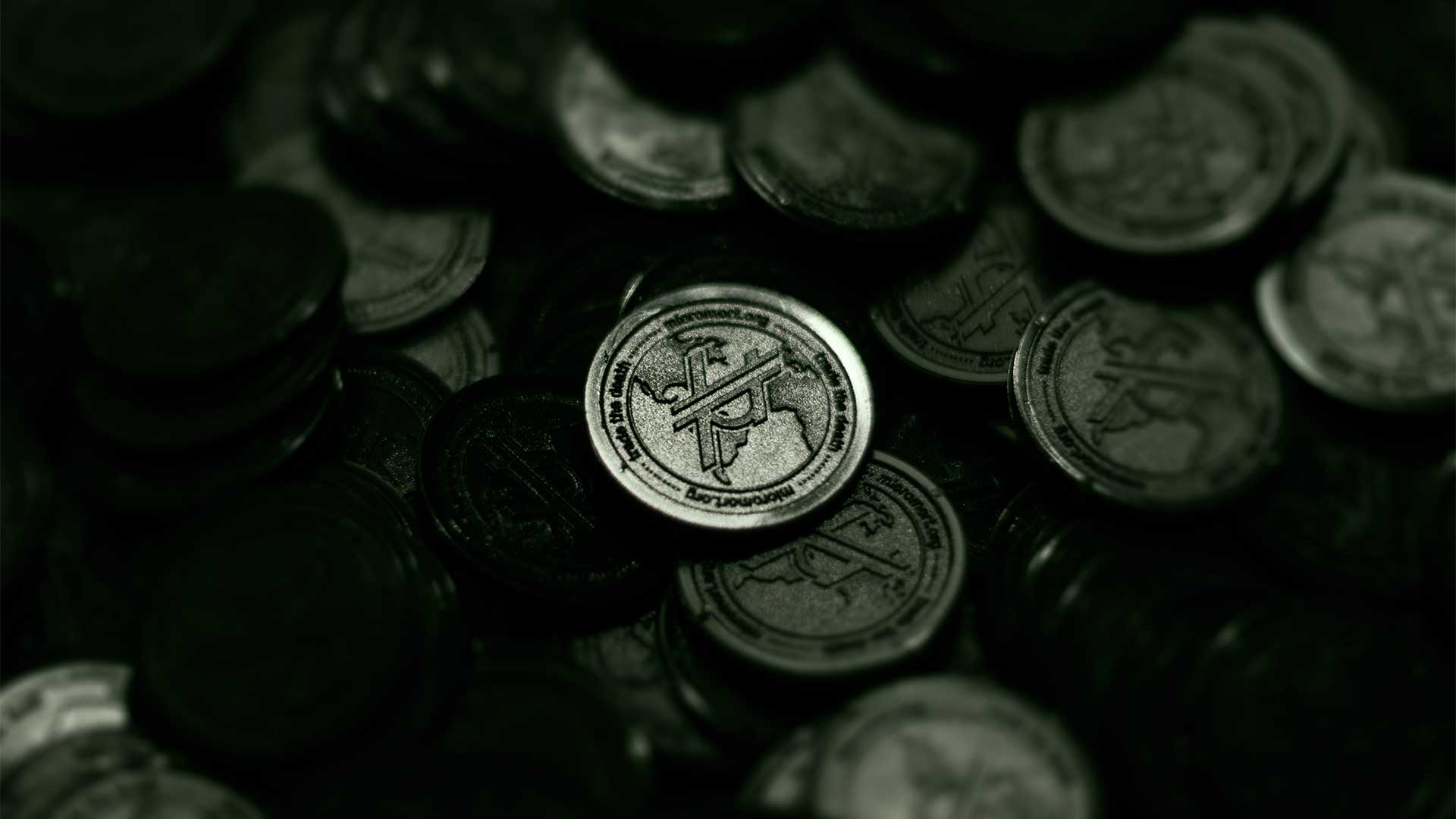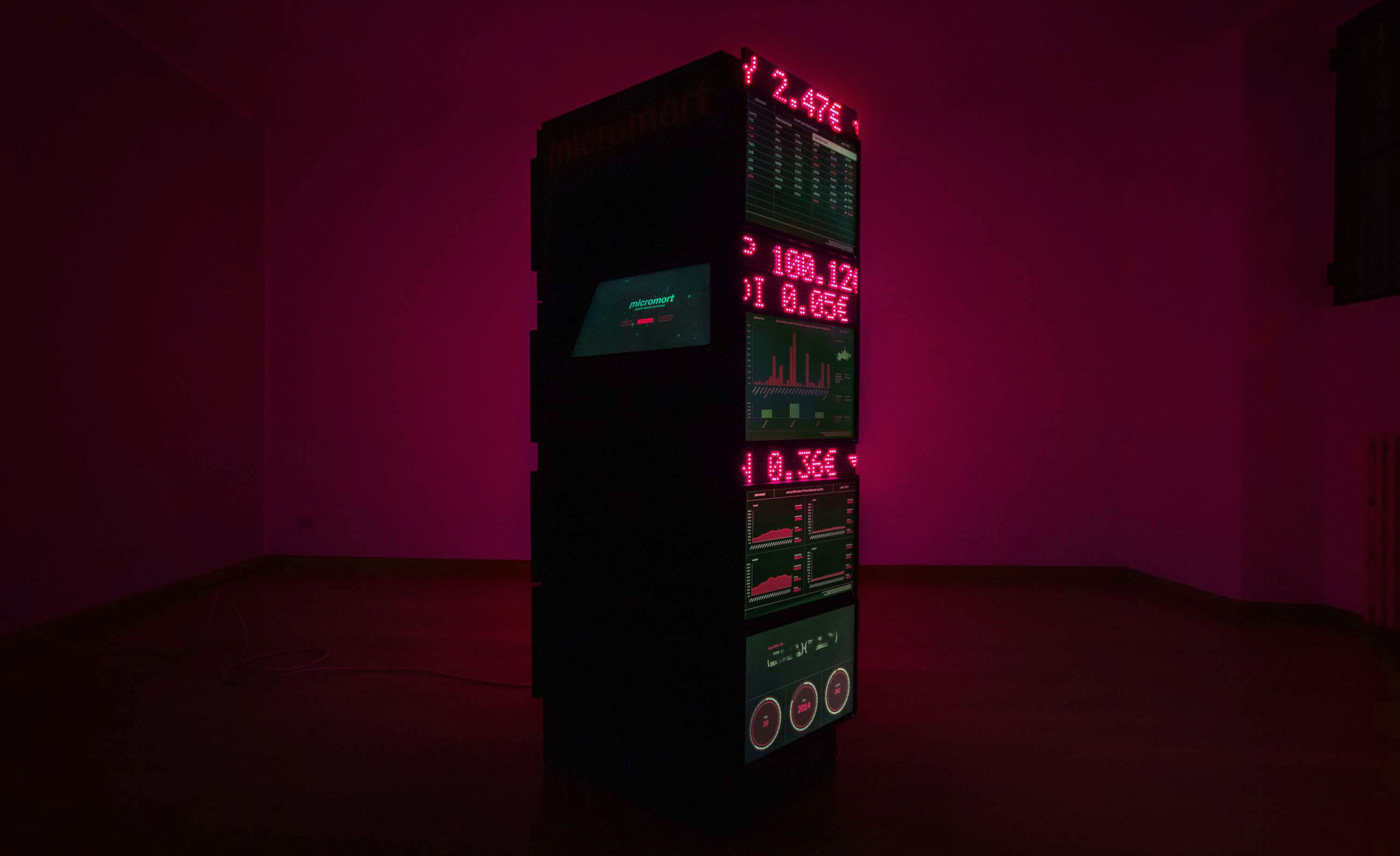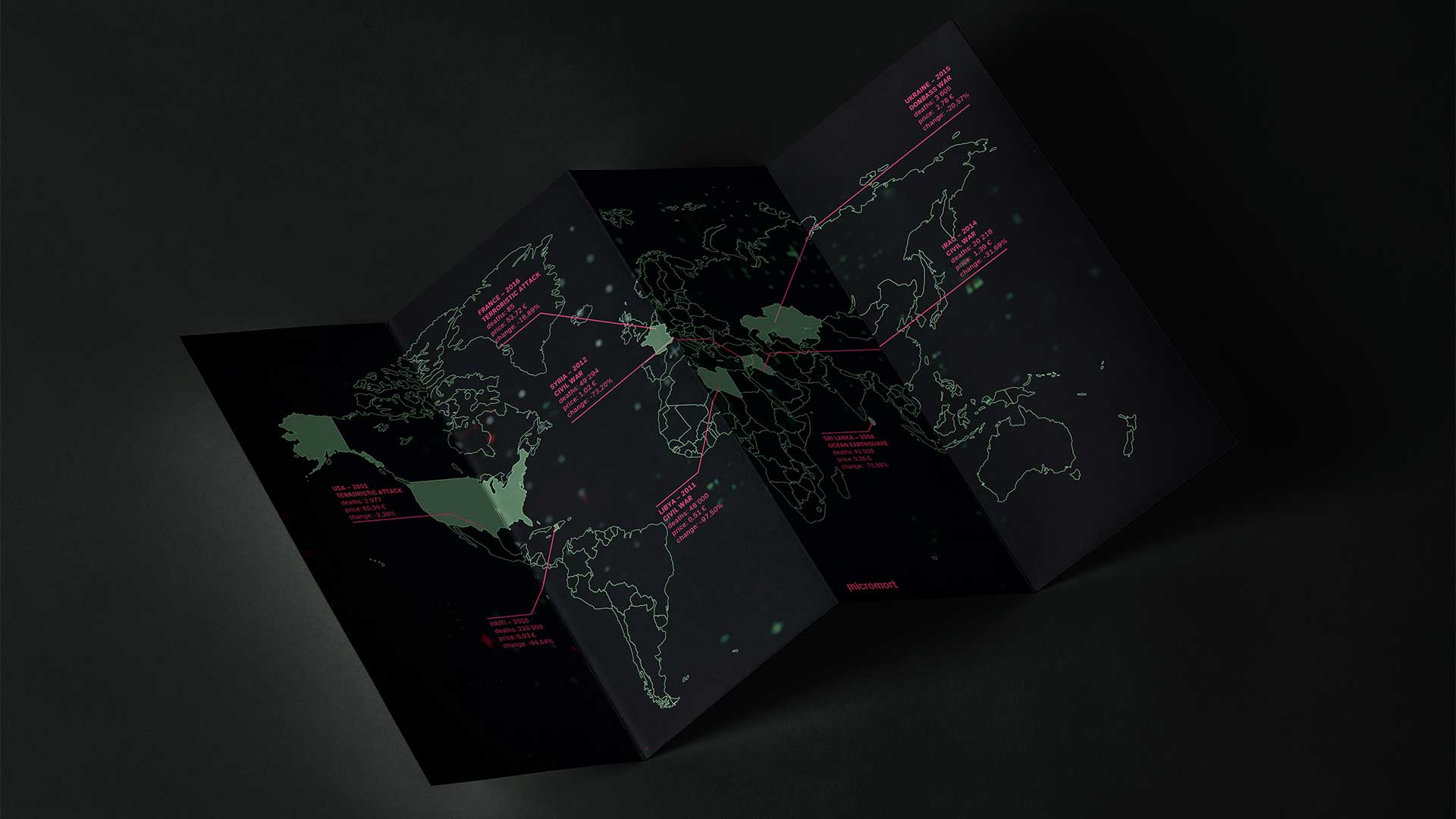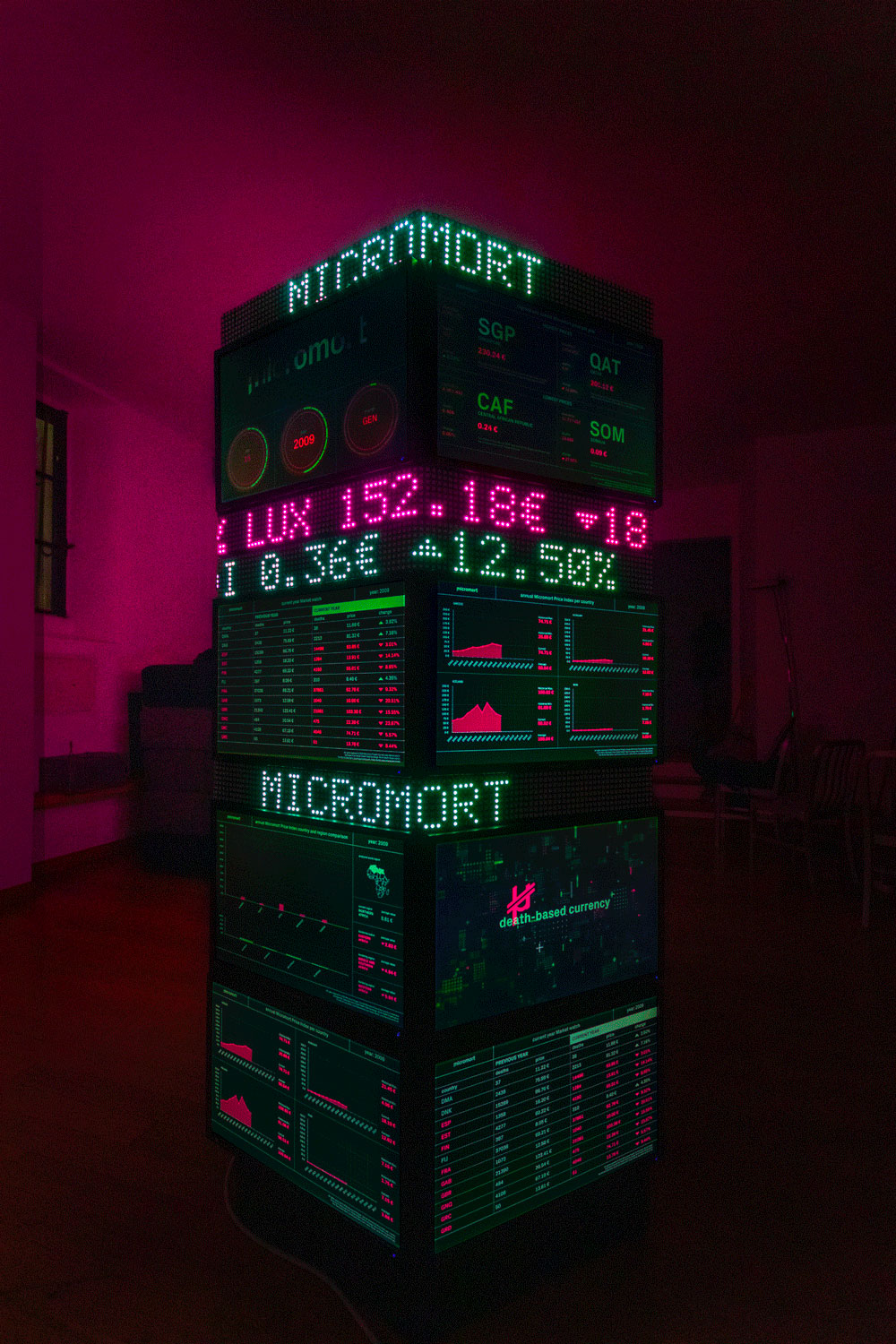Micromort is a new and innovative currency, whose value is based on human deaths depending
on the country in which they take place.
Today the value of death is perceived differently depending on the place where it occurs and
Micromort aims to exploit this factor to make money on the dead thus defining an economic
value of death for each nation.

For this currency has been created Hades 2.0, a special algorithm, which combines the GDP per capita of each country, the number of deaths in relation to the total population of that country. What is this simple rule?

Micromort aims to make us reflect on the reality in which we live:
it is not true that death is the same for everyone. Inevitably it has a social value.
And that value, unfortunately, is linked to the place the nation to which it belongs occupies in the world.
Do you live in the West? You're lucky, your death will be worth a few tens of euros.
Do you live in Lesotho?
Well, you can hope that the value will rise to one euro one day.
Yet, regardless of one's origins, a human life is still a
life. And a death is the end of that life. Why then do we place a different value on it? And what is this value?


Micromort was born in January 2020, and since its inception we have witnessed multiple events in which death has been shown to have different values. Consider how Covid has clogged our priorities, eliminating everything that did not directly affect us. This is how the clashes in Afghanistan, Iran or the war in Ukraine have lasted in our thoughts the minimum time to make us feel good about ourselves for taking a moment.


Micromort is a new and innovative currency, whose value
is based on human deaths depending on the country in which they take place.
Today the value of death is perceived differently depending on the place where it occurs and
Micromort aims to exploit this factor to make money on the dead thus defining an economic value of death for each nation.

For this currency has been created Hades 2.0, a special algorithm, which combines the GDP per capita of each country, the number of deaths in relation to the total population of that country. What is this simple rule?

Micromort aims to make us reflect on the reality in which we live:
it is not true that death is the same for everyone. Inevitably it has a social value.
And that value, unfortunately, is linked to the place the nation to which it belongs occupies in the world.
Do you live in the West? You're lucky, your death will be worth a few tens of euros.
Do you live in Lesotho?
Well, you can hope that the value will rise to one euro one day.
Yet, regardless of one's origins, a human life is still a
life. And a death is the end of that life. Why then do we place a different value on it? And what is this value?


Micromort was born in January 2020, just before a worldwide pandemic began.
Micromort was born in January 2020, and since its inception we have witnessed multiple events in which death has been shown to have different values.
Consider how Covid has clogged our priorities, eliminating everything that did not directly affect us. This is how the clashes in Afghanistan,
Iran or the war in Ukraine have lasted in our thoughts the minimum time to make us feel good about ourselves for taking a moment.

